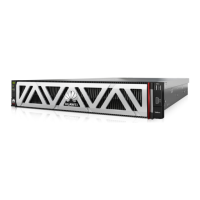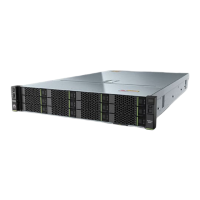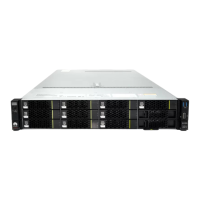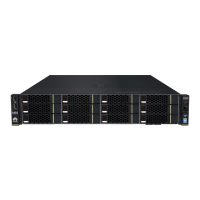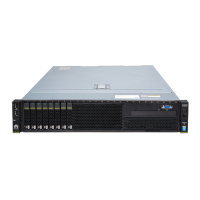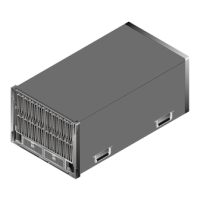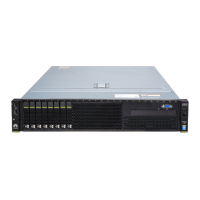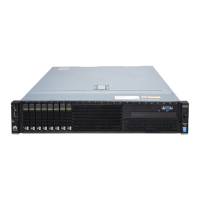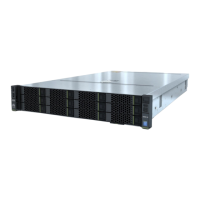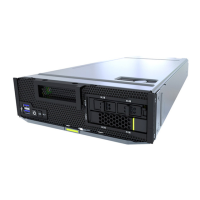Do you have a question about the Huawei TaiShan 200 23280 and is the answer not in the manual?
Describes the appearance, structure, components, and specifications of the TaiShan 200 server.
Identifies the target readers for this document, including engineers and administrators.
Defines the symbols used in the document and their meanings.
Details the physical components and layout of the TaiShan 200 server.
Explains the logical architecture and connectivity within the server.
Describes the components and drive configurations on the front panel of the server.
Explains the indicators and buttons located on the front panel.
Details the components and ports on the rear panel of the server.
Describes the indicators located on the rear panel of the server.
Provides information about FlexIO cards supported by the server and their indicators.
Details drive slot numbering and indicators for various server configurations.
Describes riser cards and PCIe slots supported by the server's I/O modules.
Details processor, storage, and FlexIO card specifications.
Specifies operating temperature, humidity, altitude, and noise requirements.
Outlines dimensions, installation space, weight, and power consumption.
Provides details on Power Supply Unit (PSU) specifications and recommendations.
Lists the necessary tools required for installation and configuration.
Explains the various safety labels and symbols found on the server devices.
Provides instructions and precautions for Electrostatic Discharge (ESD) protection.
Details space, airflow, temperature, and humidity requirements for the equipment room.
Step-by-step guide for unpacking the server chassis.
Information on installing optional components like drives and PCIe cards.
Instructions for installing the server using L-shaped and adjustable guide rails.
Guidance on connecting power, network, VGA, USB, and serial cables.
Describes methods for powering on the server using front panel, iBMC WebUI, or console.
Explains procedures for powering off the server via OS, front panel, or iBMC WebUI.
Guides through the initial setup and configuration of iBMC for versions V250 and later.
Guides through the initial setup and configuration of iBMC for versions V3.01.00.00 and later.
Information regarding maintenance services and warranty details.
Provides safety information and precautions for operating the server.
Lists requirements and precautions for logging into the iBMC WebUI as a client.
Instructions for accessing the remote virtual console via iBMC WebUI and IRC.
Procedures for logging into the iBMC Command Line Interface (CLI) via SSH or serial port.
Steps to log in to the server via serial port using PuTTY.
Steps to log in to the server via network port using PuTTY via SSH.
Lists requirements and precautions for logging into the iBMC WebUI as a client.
Instructions for accessing the remote virtual console via iBMC WebUI and IRC.
Procedures for logging into the iBMC Command Line Interface (CLI) via SSH or serial port.
Steps to log in to the server via serial port using PuTTY.
Steps to log in to the server via network port using PuTTY via SSH.
Information on how to obtain technical support and access support websites.
Lists available maintenance tools and their download links.
Basic overview of the Basic Input/Output System (BIOS) and its functions.
Description of the Intelligent Baseboard Management Controller (iBMC) and its features.
Definitions of technical terms and acronyms used in the document.
List of common acronyms and abbreviations used in the server documentation.
Lists sensors and their descriptions for servers with specific Kunpeng processors.
Lists sensors and their descriptions for servers with other Kunpeng processors.
| Model | TaiShan 200 23280 |
|---|---|
| Category | Server |
| Processor | Kunpeng 920 |
| CPU Architecture | ARMv8 |
| Cores | 64 |
| Processor Frequency | 2.6 GHz |
| Number of CPUs | 2 |
| Memory Type | DDR4 |
| Expansion Slots | Up to 6 PCIe slots |
| Form Factor | 2U rack server |
| Network Ports | 2 x 10GE |
| Power Supply | Redundant power supplies |
